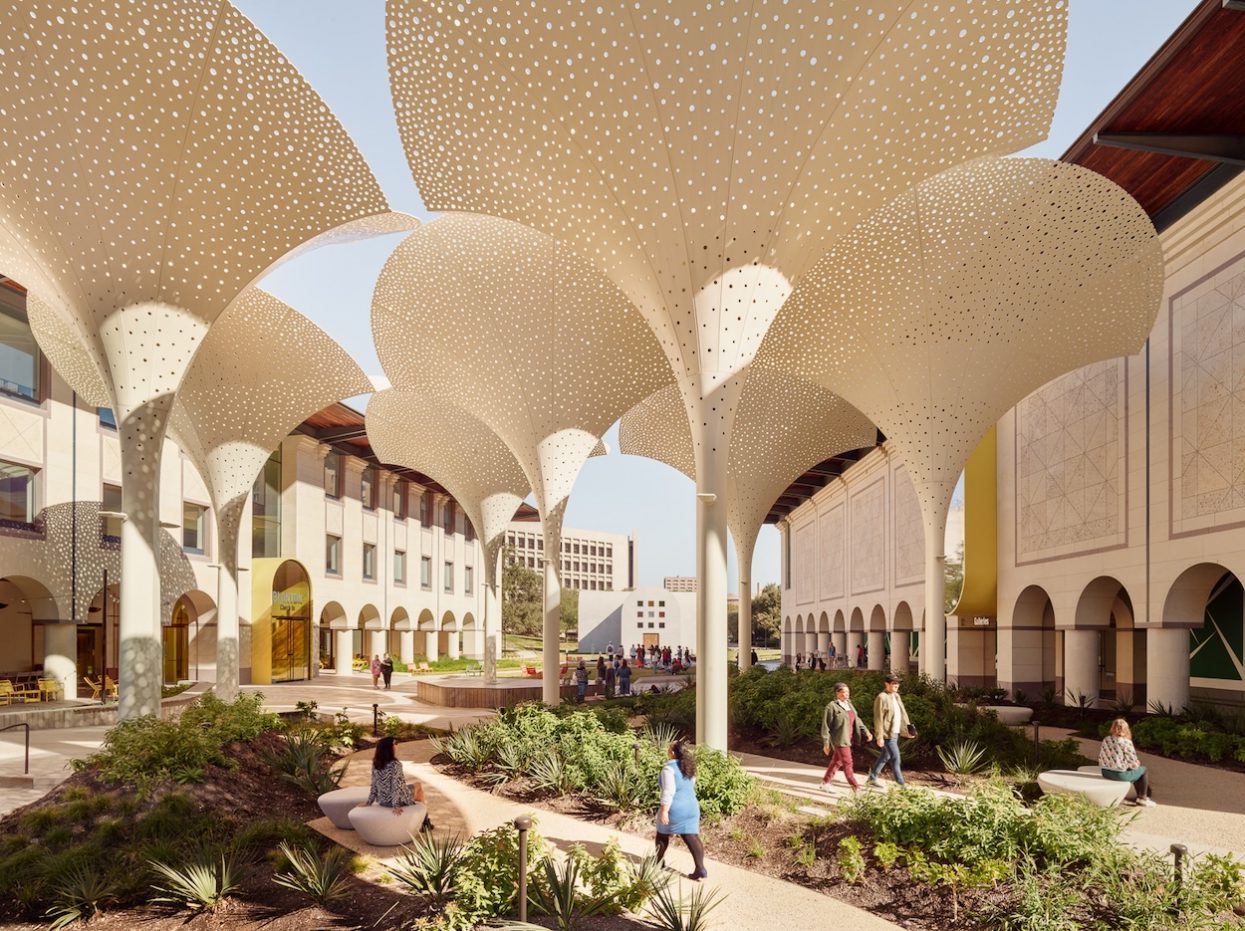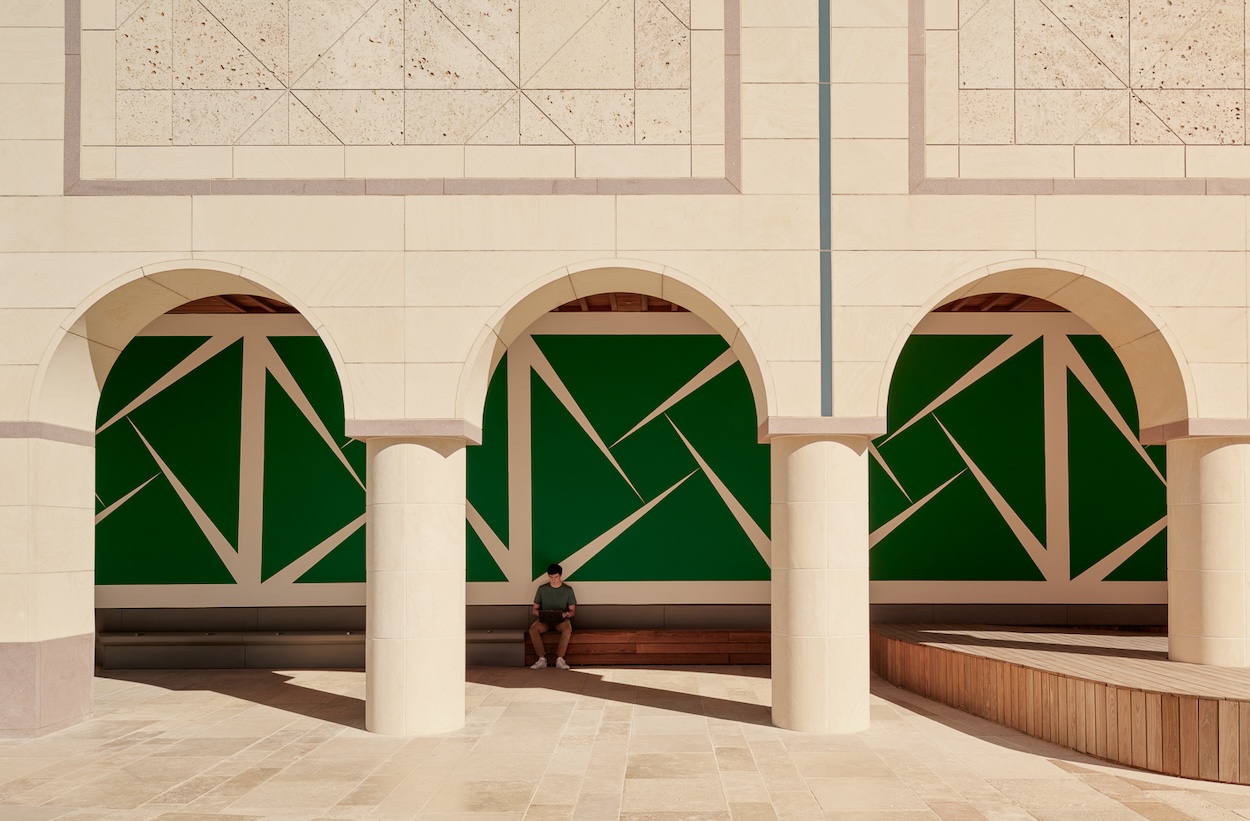Simone Wicha, director of the Blanton Museum of Art, once joked that “people have a hard time finding our front door.” Occupying two inward-facing buildings at the edge of the University of Texas at Austin (UT) didn’t help—nor did its architecture, which blends in with UT’s Spanish Revival style. The Blanton needed a grand entrance to distinguish itself while reinforcing its outsize presence as one of the country’s foremost university art museums. For that, Wicha turned to the Norwegian-American firm Snøhetta, whose founder, Craig Dykers, studied architecture at UT as an undergraduate, and who shepherded the firm through visionary projects like the 9/11 Memorial and Museum and the new SFMOMA.
The museum is now much harder to miss. Snøhetta’s intervention elevates the Moody Patio—a 20,000-square-foot courtyard situated between the museum’s two buildings that frames postcard-perfect views of the Capitol—into an exuberant gateway. There, the firm built an elegant shade canopy of 12 perforated, petal-shaped structures whose swooping shapes dance in dialogue with the arched vaults of the buildings’ loggias. They generate dappled light and capture and distribute rainwater to an underground filtration system that irrigates the plaza’s walkways and gardens, which abound with 25,000 native plants like the dwarf palmetto and Texas gold columbine.



